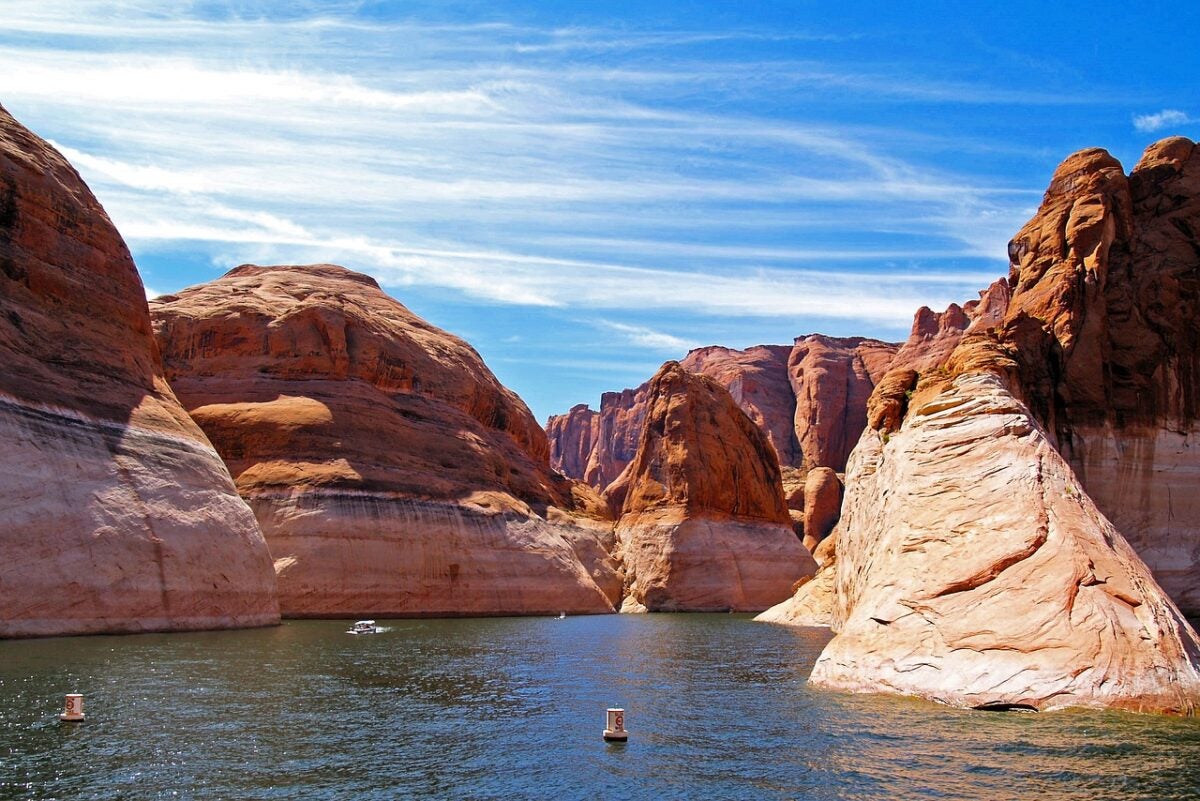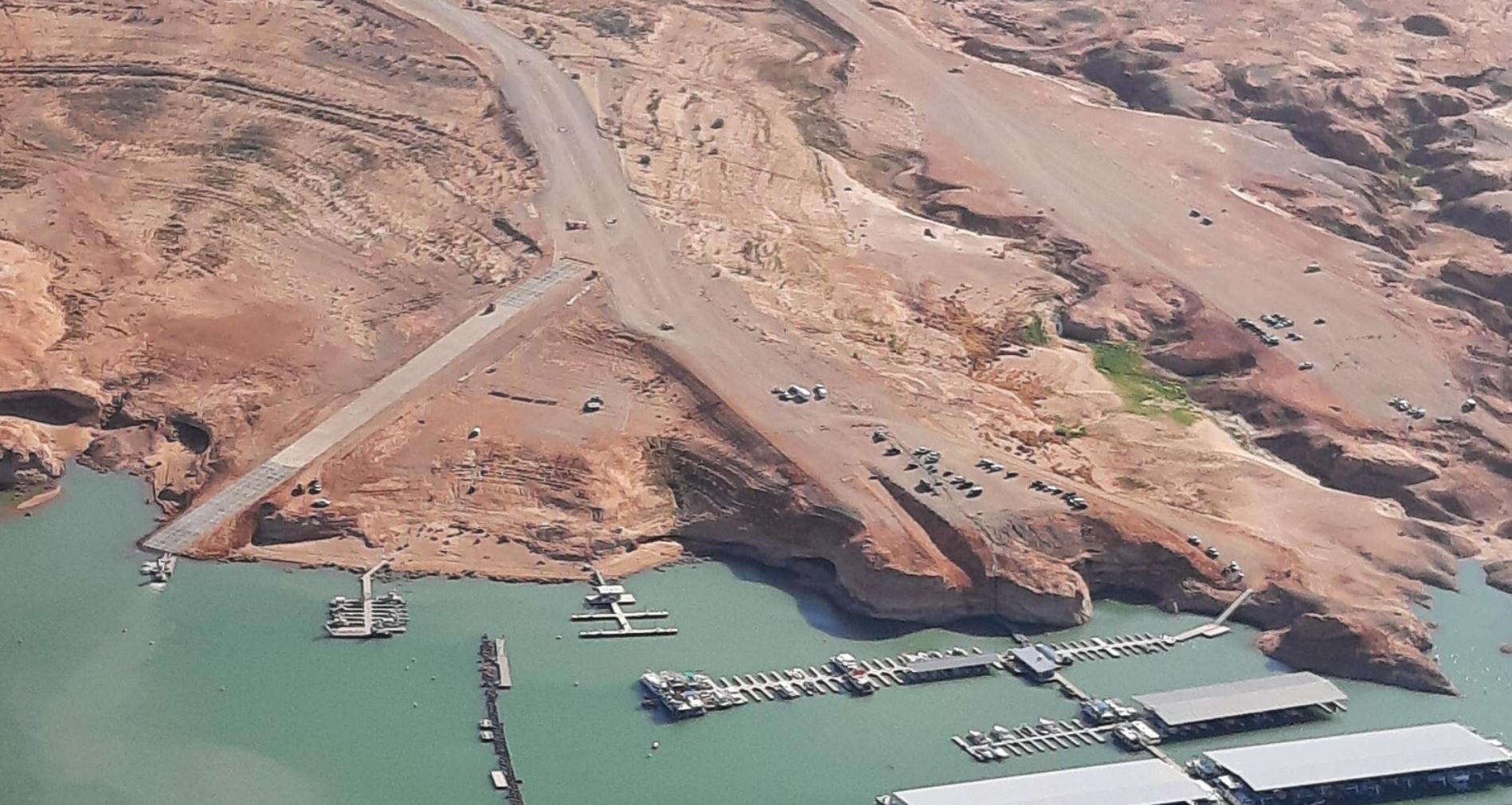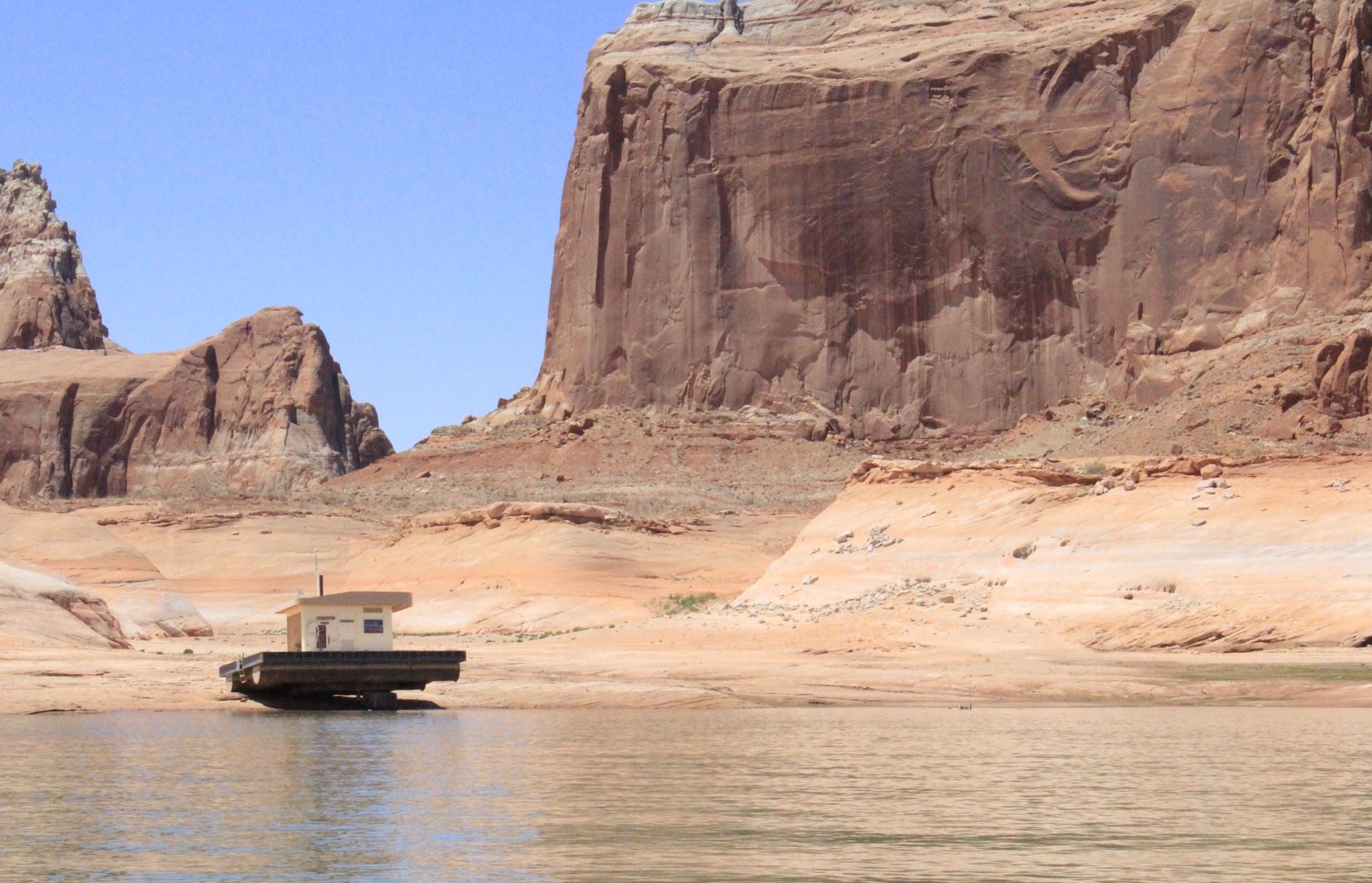Midwest Mecca for Boating & Fishing – Lake Powell – But for How Long?
Travis Olander 10.18.23

The stories-tall bathtub rings running the perimeter of the basin tell the story: Some day soon, much sooner than anyone had anticipated, Lake Powell could be called Powell Canyon. This shimmering jewel of the Midwest has long been a haven for boating and fishing. Its iconic red rocks, crystal waters, and boundless opportunities for angling and making wakes have made it a cherished destination for generations. But Lake Powell now finds itself in the throes of an existential crisis, one that threatens not only its very existence, but also the vital ecological balance and habitability of the region. Lake Powell is, indeed, vanishing, and nobody knows what to do to save it.
Fishing Coverage on AllOutdoor
- The Premium Zenon MG-X Spinning Reel from Abu Garcia
- Deep Water, Walleye Candy! NEW Berkley Fishing Deep Hit Stick
- 2023 Gag Grouper Season Closing Early in Federal Gulf of Mexico Waters
- Berkley Releases New Saltwater Hard Baits and Adds Sizes
The Looming Threat of Drought
Lake Powell is facing the omnipresent specter of drought. The American Midwest, faced with rapid population growth and increasing water demand, has grappled with a severe and protracted drought, with no evidence of relief. The Colorado River, the lifeblood of Lake Powell, has been running dangerously low, with water levels dropping to historically unprecedented levels. As of summer, 2023, Powell sits at just 24% capacity. This prolonged drought has already had devastating consequences for the lake. Visit the boat launch today, and you’ll find a long, sloping pavement that, just two years before, would’ve been 45 feet underwater.
“It’s completely unprecedented. This lake hasn’t been at this level since 1967,” said Glen Canyon National Recreation Area superintendent William Shott. “Seeing this place come back to life is just such a special experience,” Balken said. “It’s sort of a treasure hunt.”
Shott refers to Glen Canyon, once submerged but now being reborn as the lake recedes to record depths. “We can’t go on with business as usual and hope that more water fills this reservoir because it’s probably not going to,” he said. “It would be prudent for us to start planning for life after Lake Powell.”

Siphoning What Little Remains
Paradoxically, billions of gallons of water from Lake Powell were recently released into the Grand Canyon. For three days, the Glen Canyon Dam released more than 39,000 cubic feet of water per second, a “much larger than normal” rate of flow, according to the National Park Service. The release was meant to restore deteriorated sandbars, beaches and campgrounds in the Grand Canyon.
Although officials claim the water release won’t affect the lake’s annual water allotment, the siphoning highlights a critical issue that stands in direct confrontation with the lake’s survival: Hundreds of thousands of people rely on Lake Powell to supply water to their homes, businesses, and communities, which all reside in an arid landscape suffering few alternatives for hydration.
The booming population of southern Utah is placing extra strain on Lake Powell. In spite of the fact the lake has lost more than 150 feet of water since 2000, a proposal by the state to build a pipeline from the lake to Washington County – where water would feed into the Sand Hollow Reservoir, supporting the towns of St. George, Ivins, and local communities – remains with the legislature. Activists continue sounding alarms about the proposed increase in water reclamation.
“The system is crashing and to be honest, it’s kind of incomprehensible to think of a diversion of that size that would serve 200,000 people in one county in southern Utah at this moment in time. There’s just not the water,” Matt Rice, Southwest Region Director of the nonprofit American Rivers,” said Matt Rice, Southwest Region Director of America Rivers, a nonprofit.
“We’re worried about every molecule of water that that we can deliver to Lake Powell and Lake Mead to protect critical hydroelectric infrastructure.” But officials in Washington County appear set to press ahead with the proposed pipeline, with a plan to pump up to 80,000 acre-feet of water per year into Sand Hollow Reservoir.

With 90 Feet to go, Dramatic Proposals to Save the Lake
Although it won’t literally evaporate into thin air, Lake Powell could become a dead feature incapable of generating any hydroelectric energy for millions of people, should its water level drops below 3,490 feet. As of August, 2023, the water level rests at about 3,580 feet. With just 90 feet of water left to prevent socioeconomic disaster, dramatic proposals have been suggested to save the lake. One plan involves constructing a pipeline that runs from the Mississippi River, diverting some of its 4.5 million gallons of water that feeds into the Gulf of Mexico to replenish the Colorado River and Lake Powell, Lake Mead, and its other reservoirs.
But such a pipeline would have to transit over one thousand miles, mostly uphill, with a diameter of at least 88 feet, at a cost of hundreds of billions of dollars. Construction would take decades, with thousands of private landowners probably refusing to sell their land to the project. Relying on a patchwork of different state and federal eminent domain laws to seize the necessary easements would result in lengthy court battles along the way.
Taking from Colorado to Pay Powell
Even if the Mississippi pipe dream were given the green light, an interim fix needs to be found to sustain Lake Powell and prevent it from reaching the event horizon level of 3,490 feet. That fix is likely to be found in Colorado. The state diverts more than 1.3 million acre-feet of mountain runoff and precipitation from prevailing winds west of the Rockies to its populations east of the mountains, using a series of tunnels. This diversion prevents that water from draining into the Colorado River. Nearly 40% of two major river tributaries – the Boustead Tunnel and the Twin Lakes Tunnel – are diverted to eastern Colorado in the dry season.
Arguments are now being made that the Continental Divide should be allowed to function naturally, as it did before: Snow and rain that falls west of the Rockies should be allowed to flow into the Colorado River and, by extension, its reservoirs, Lake Powell included.
(Or Just Let It Go)
The Glen Canyon Institute says Lake Powell could be left to nature, with the Glen Canyon Dam removed and the lake allowed to become another part of the Colorado River once again. The push to simply drain the lake is gaining momentum, in spite of the fact that about five million homeowners would need to find alternate sources of electricity – and a once bejeweled body of water loved by campers, fisherman, and boaters would become mere memory. No matter what happens, Lake Powell will likely remain one of the top destinations for fishing in the Midwest. It’s loaded with Largemouth and Smallmouth Bass, so get the right lures and gear for some lakeside bass fishing, and plan a trip next summer.